
Discover Your Ancestors
Two critically acclaimed publications are available to family history researchers - the annual print magazine, Discover Your Ancestors, and the monthly online magazine, Discover Your Ancestors Periodical. Click here to subscribe.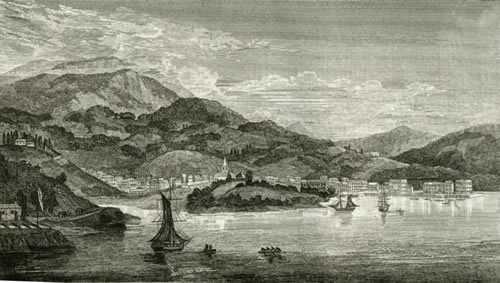 The Mulberry Madam
The Mulberry Madam
Nick Thorne unearths a story of a brothel-keeper sent to Australia for the murder of a policeman
Ancestors that fell foul of the law are always fascinating subjects for family history research. The chance to unearth a felon from within the records can be an exciting prospect. The Convict Transportation Registers at www.TheGenealogist.co.uk are a very useful resource for finding those of our forebears that escaped the hangman's noose but were banished to the other side of the world for committing a serious crime at home.
People from all over the British Isles were sent to serve their sentence in penal colonies working for free settlers or in public works in the colony. Convicts were first sent to settlements in America, but with independence of the United States the British authorities switched to sending its convicted prisoners to Australia. This carried on until the abolition of penal transportation took place in 1853.
There was a number of courts able to sentence convicts to transportation and this included the Royal Court in the Channel Island of Jersey. There we find Miss Maria Le Noble from St Helier, Jersey convicted of killing a policeman who had gone to her house to draw up a report against her for a riot in which she had taken place. Searching the Newspaper & Magazine records collection at TheGenealogist we also find the murder reported in the Illustrated London News for 7 March, 1846: "She stabbed him in the stomach with a knife, and he died the next day…"
Le Noble was a notorious madame running a house of ill repute from what, in contemporary reports, was charmingly named as Mulberry Cottage in Patriotic Place. Le Noble was living as the 'wife' of Pierre Le Gendre of the same address, and calling herself Mary. There were four other young women under their roof.
We can find them all in TheGenealogist's records for the census of 1841, in which Le Noble is listed as a 'Housekeeper', Le Gendre as a 'Farmer'. Four more women, all supposedly 20 years old, are listed with no occupation. One wonders what had gone through the enumerator's mind before he decided to leave these blanks in his return.
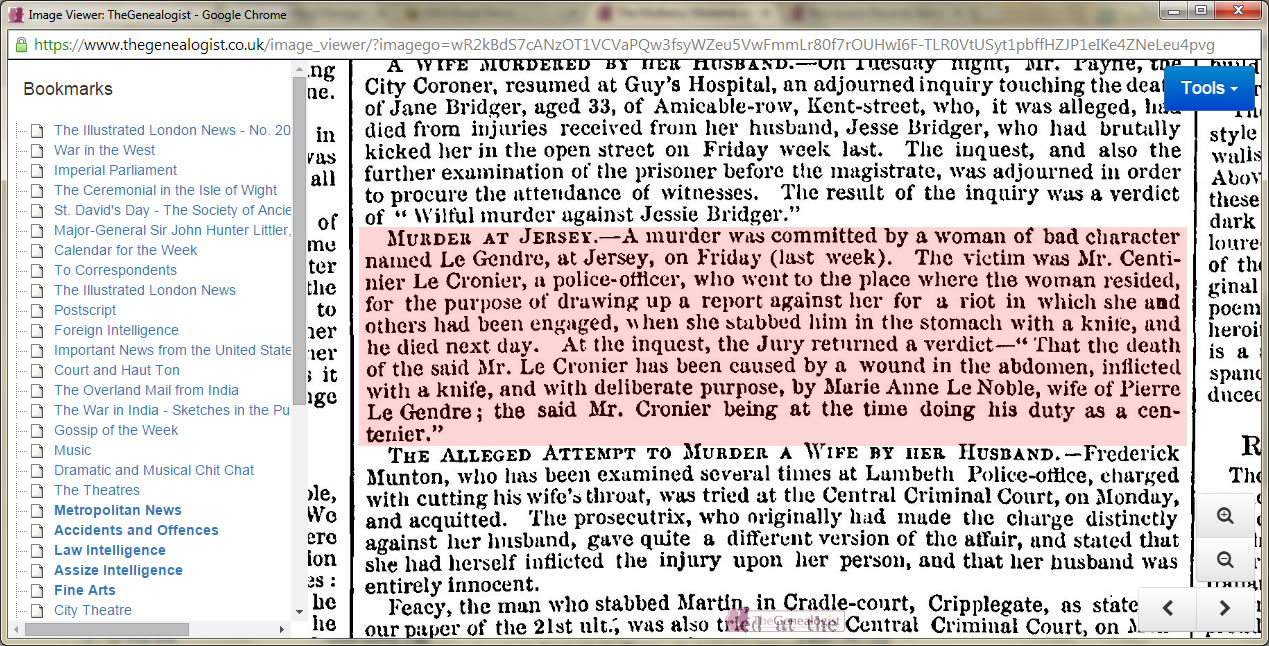
The murder is reported in theIllustrated London News for 7 March, 1846, which can be viewed at www.TheGenealogist.co.uk
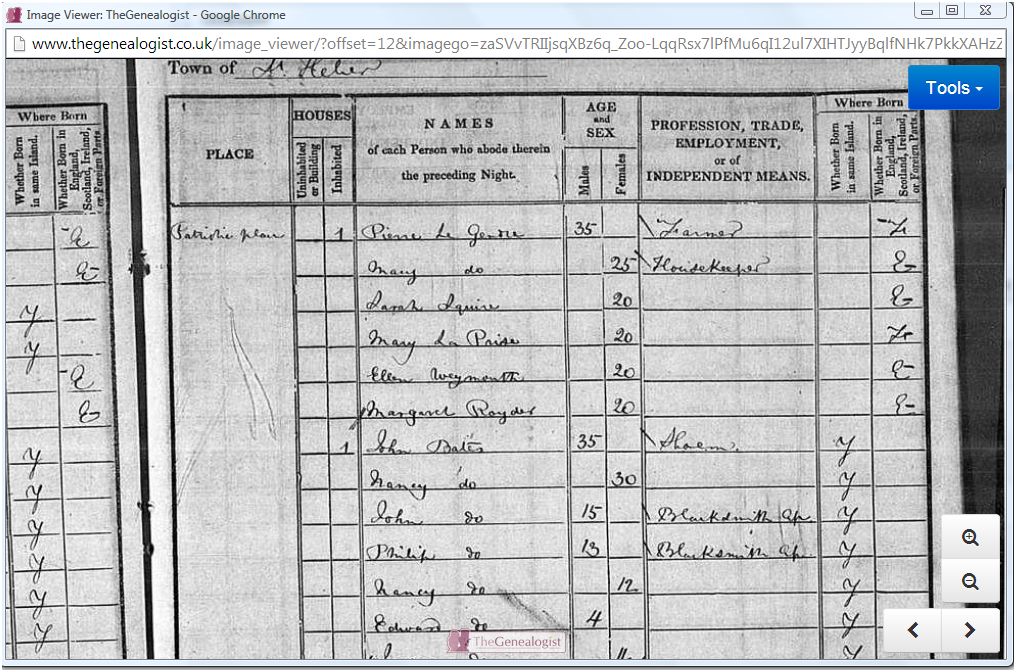
Maria Le Noble and household in the 1841 census
Until the 19th century, the unpaid Honorary Police provided the only civilian law enforcement for the island and the victim of Maria Le Noble's crime was one of their ranks. Mr George Le Cronier was a merchant in the town and, as a Centenier, was also a senior member of the Honorary Police for the Parish of St Helier, a position that he was elected to by the parishioners of the town.
Using the MasterSearch facility at TheGenealogist, Maria Le Noble appears in the transportation records in the site's Court & Criminal Records area, revealing that she was sent to Van Diemen's Land (Tasmania) for life.
Clicking on the transcripts we can see that she was "Transported for Life for Manslaughter", leaving some five months after her trial in April 1846 on the ship named 'Elizabeth & Henry'.
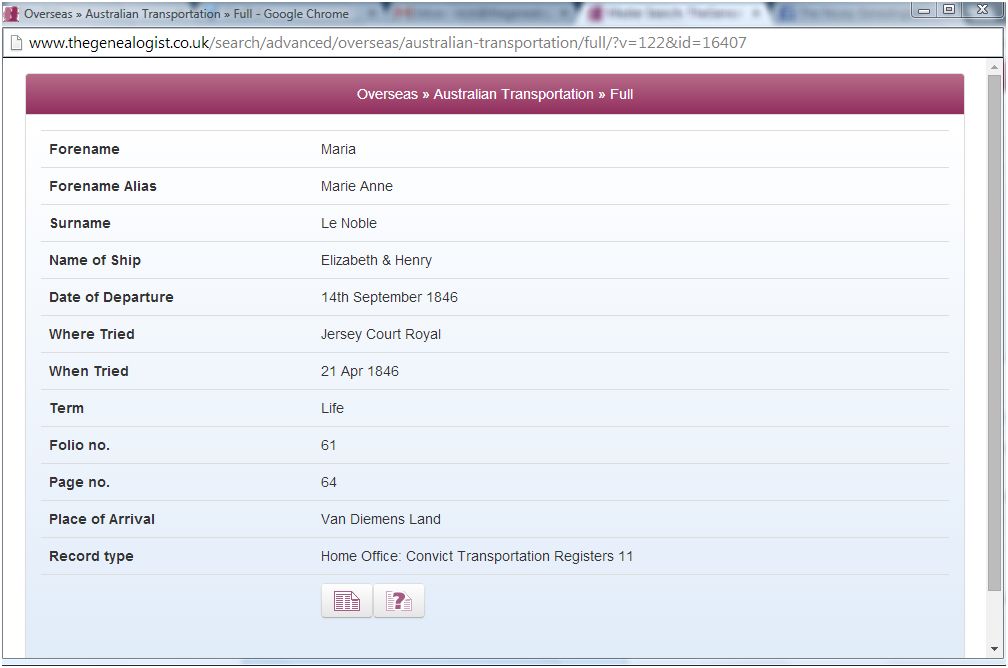
Transcript of Le Noble's transportation record
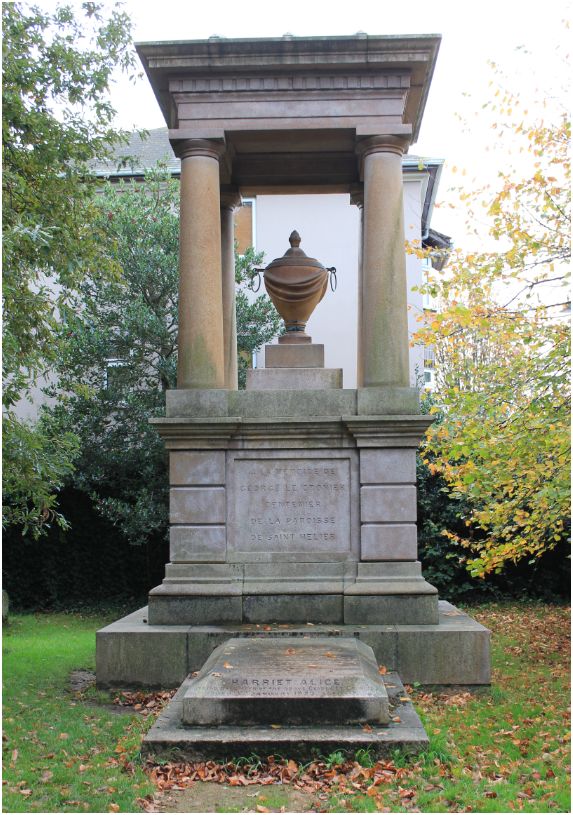
George Le Cronier's grave in St Helier, Jersey
Her crime may surprise us today, as the facts would surely point towards it being one of murder. The defendant had told people that she was going to kill the next policeman who came through her door and had even had her knife sharpened in the morning of that same day.
Despite the clear-cut facts pointing to a capital crime, Victorian juries were reluctant to see women hanged and so she was prosecuted for manslaughter to ensure a conviction. This emphasises the need to take into account the social context of the time in any family history research that we do.
The unfortunate part-time policeman, who died days later from his stab wound, can be found buried in Green Street Cemetery in St Helier. This was the first municipal burial ground to be opened in the island's capital, as its parish churchyard was full. Le Cronier's huge grave can be seen on TheGenealogist's Headstone Image Database. Certainly it would seem that a grateful citizenship of St Helier made sure that their well respected Centenier had a fitting memorial for losing his life in the course of his unpaid duty. It is one of the largest monuments to be found in the cemetery.
This Victorian murder story illustrates the rich resources available to Diamond subscribers of TheGenealogist.co.uk for investigating their ancestors. Using the Census collections, Criminal Records, Newspapers & Magazines and the Headstone Images we have been able to trace the story of the Madame of Mulberry Cottage and the murdered policeman.